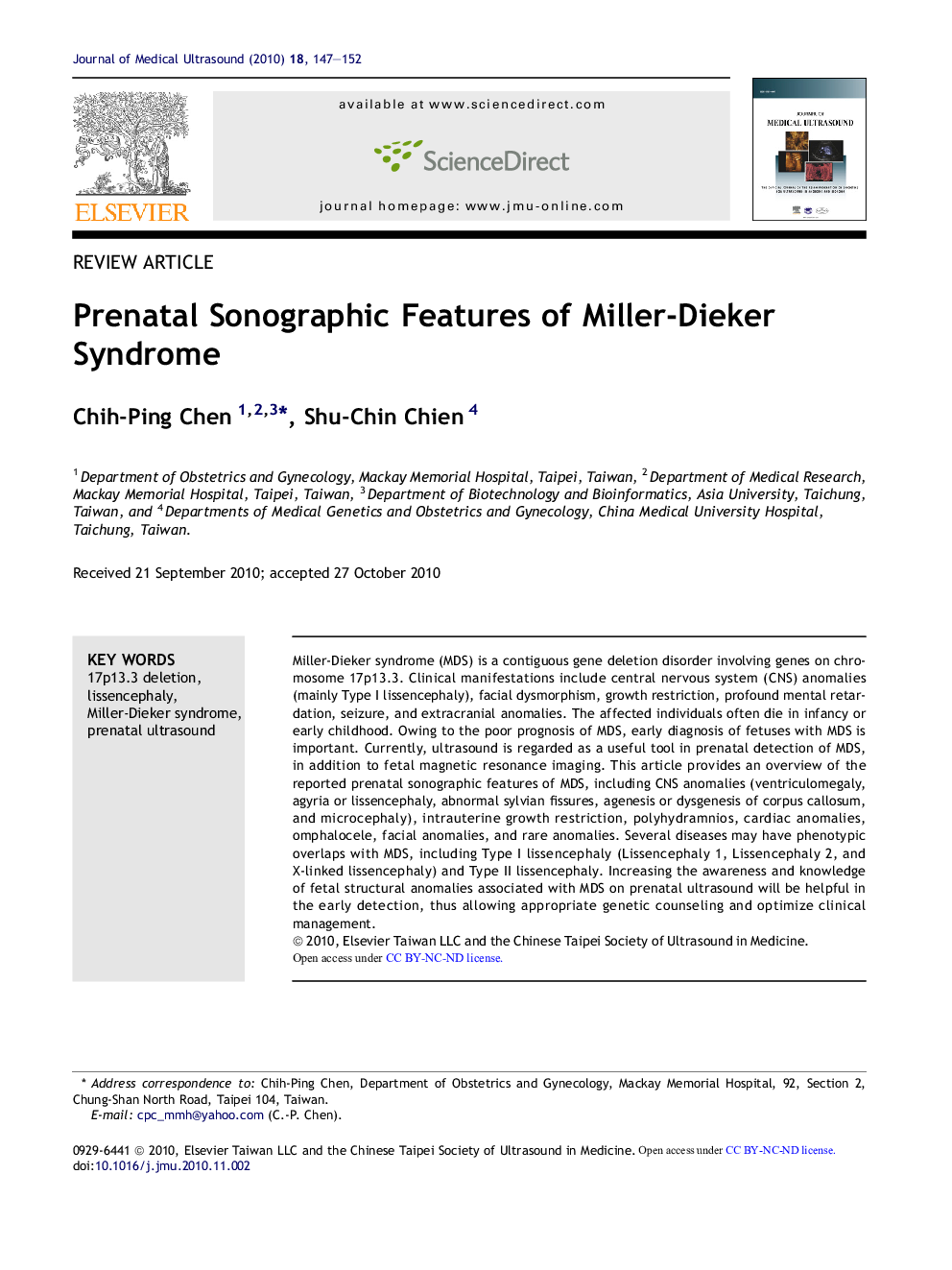| Article ID | Journal | Published Year | Pages | File Type |
|---|---|---|---|---|
| 4233259 | Journal of Medical Ultrasound | 2010 | 6 Pages |
Miller-Dieker syndrome (MDS) is a contiguous gene deletion disorder involving genes on chromosome 17p13.3. Clinical manifestations include central nervous system (CNS) anomalies (mainly Type I lissencephaly), facial dysmorphism, growth restriction, profound mental retardation, seizure, and extracranial anomalies. The affected individuals often die in infancy or early childhood. Owing to the poor prognosis of MDS, early diagnosis of fetuses with MDS is important. Currently, ultrasound is regarded as a useful tool in prenatal detection of MDS, in addition to fetal magnetic resonance imaging. This article provides an overview of the reported prenatal sonographic features of MDS, including CNS anomalies (ventriculomegaly, agyria or lissencephaly, abnormal sylvian fissures, agenesis or dysgenesis of corpus callosum, and microcephaly), intrauterine growth restriction, polyhydramnios, cardiac anomalies, omphalocele, facial anomalies, and rare anomalies. Several diseases may have phenotypic overlaps with MDS, including Type I lissencephaly (Lissencephaly 1, Lissencephaly 2, and X-linked lissencephaly) and Type II lissencephaly. Increasing the awareness and knowledge of fetal structural anomalies associated with MDS on prenatal ultrasound will be helpful in the early detection, thus allowing appropriate genetic counseling and optimize clinical management.
